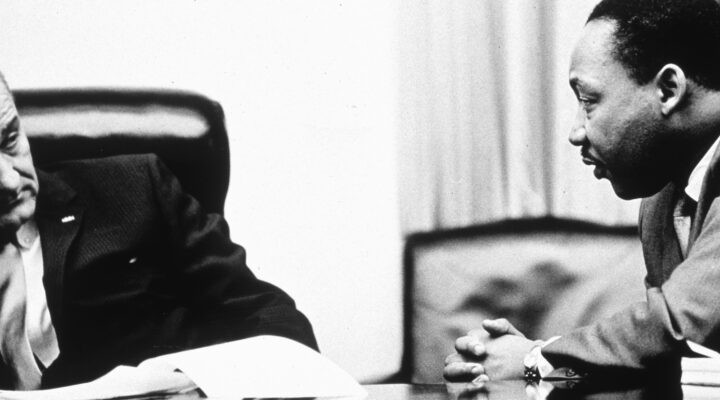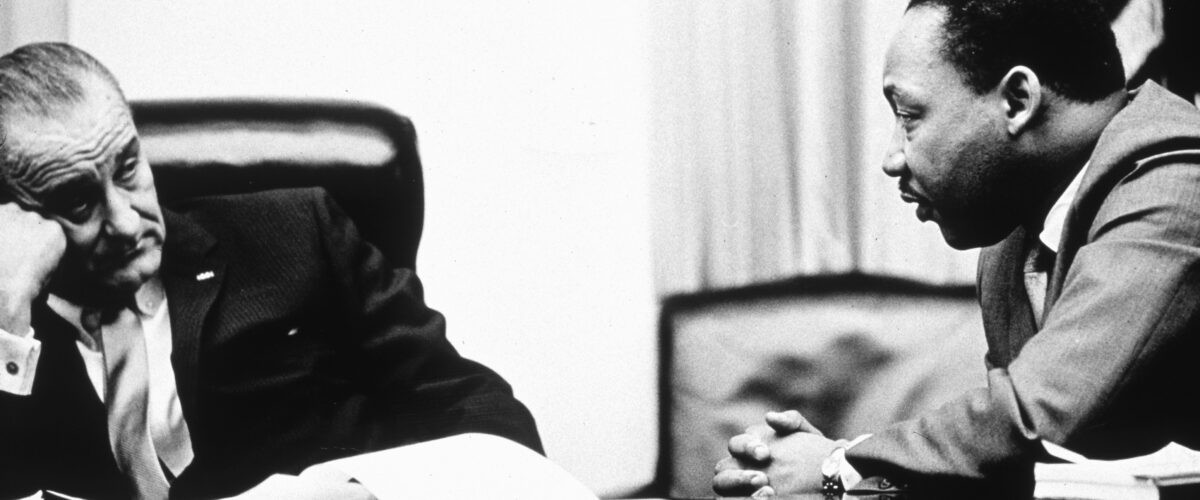Throughout American history, when Black people have been able to advance toward equal opportunity, the mainstream power structure has tended to change its own rules in an effort to reinforce its control.
In the decade immediately following the abolition of slavery, former slaves were able to build a formidable power base in the same communities where they were owned as property just a few years prior. They utilized their brilliance in applying the principles of democracy to build a political power base that was able in a few short years to elect hundreds of Blacks to political office throughout the South, even to the heights of the leadership of some southern state legislatures and Congress.
The response of the mainstream power structure was to remove the Constitutional protections of Reconstruction, beginning with the Compromise of 1877, to usher in a new error of terroristically imposed control which came to be known as Jim Crow segregation.
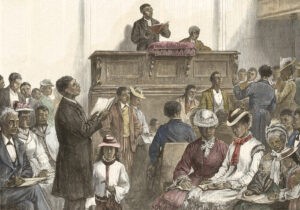
The Illustrated London News, 1876.
A print captioned “American Sketches: A Negro Congregation at Washington.”
Collection of the Smithsonian National (Museum of African American History and Culture)
In the dawning of the 20th century, Black people, even within the confines of Jim Crow segregation, were able to build pockets of prosperity in communities like Black Wall Street in Tulsa, Okla., and Rosewood, Fla. They utilized their brilliance in applying the principles of capitalism and cooperative economics to create the American dream for themselves with the intention of passing down the wealth they built to their progeny.
The response of the mainstream power structure was to combine the forces of mob justice with officially sanctioned military action against these Black citizens to literally burn these communities to the ground, killing thousands of Americans in the process, while they set up infrastructures of control like redlining, restrictive clauses and gentrification to literally divide and conquer the sparks of Black economic power.
In 1954, a new era of equal opportunity was promised to America in the form of the Brown v. Topeka Board of Education Supreme Court decision, which declared the racial segregation of schoolchildren unconstitutional. Black people rejoiced at the opportunity to utilize the brilliance of their children, unhindered by a separate and unequal educational infrastructure, to build a bright future of justice and equality.
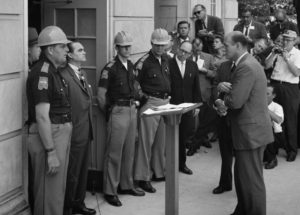
George Wallace attempting to block integration at the University of Alabama, confronted by Deputy U.S. Attorney General Nicholas Katzenbach.
(Warren K. Leffler, U.S. News & World Report)
The response of the mainstream power structure was to stubbornly delay the enforcement of justice. They obstinately defied justice by standing in the doorways of their schools, declaring “segregation now, segregation tomorrow, segregation forever!” In some cases, they even closed down entire school districts to avoid the horror of having a Black child sit next to a white child as they learned together, as if the fear of having their children compete with Black children on equal footing was too much to endure. Many of today’s elite private schools of the South were founded as “segregation academies” in the 1960s and ’70s to provide an alternative to equal opportunity and racial justice in public schools.
In the aftermath of the Civil Rights Movement, a resurgence of Black political power, not seen since Reconstruction, occurred in urban America. Black people utilized their brilliance in organizing their numbers toward an electoral potency that resulted in the election of local, state and federal officials across America — even extending to the White House.
The response of the mainstream power structure was to roll back the gains of the Voting Rights Act of 1965 with the Shelby v. Holder Supreme Court decision of 2013, essentially asserting that the protections of the Civil Rights Movement were unnecessary and harmful because they worked. In the words of dissenting Justice Ruth Bader Ginsburg “throwing out preclearance when it has worked and is continuing to work to stop discriminatory changes is like throwing away your umbrella in a rainstorm because you are not getting wet.”
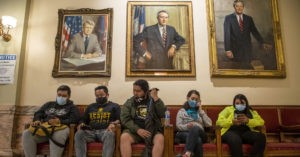
Members of the Georgia Latino Alliance for Human Rights listen on their electronic devices during debate on SB 202 in the Georgia House Chambers Thursday, March 25, 2021. (Alyssa Pointer/Atlanta Journal-Constitution via AP)
Unhindered by Civil Rights protections, today’s conservative maintainers of the status quo are reemploying their old tricks of enforcing rules that on the surface appear neutral but de facto result in a diminished turnout among Black voters, which serves their electoral interests. As Paul Weyrich, known as the father of the modern right-wing evangelical political movement, said: “I don’t want everybody to vote. Elections are not won by a majority of the people. They never have been from the beginning of our country, and they are not now. As a matter of fact, our leverage in the elections quite candidly goes up as the voting populace goes down.”
With their inability to earn the support of a significant portion of the Black vote, along with the demographic realities of a shrinking white portion of the electorate, voter suppression appears to be the only long-term hope of the conservatives to maintain power and relevance because their numbers just don’t add up. This dilemma was captured well by South Carolina Sen. Lindsay Graham when he lamented, “We’re not generating enough angry white guys to stay in business for the long term.”
Indeed, there is nothing new under the sun. The mainstream power structure repeatedly demonstrates the propensity to distort and abuse their own principles and constitution in order to hold on to the control that they enjoy, particularly when protecting themselves from what they perceive as the threat of Black people exercising their rights. Once we recognize this clear pattern, do we fight it by defending the integrity of our American ideals, or do we ignore it to “make America great again”?
Sid Smith III is a music ministry consultant and serves at Third Baptist Church of San Francisco. His father, Sid Smith Jr., was a pioneer Southern Baptist Convention leader credited with starting more than 400 predominantly Black SBC churches.
Related articles:
What does the rise of the ‘nones’ have to do with the future of the Republican Party?
Why Critical Race Theory could be good news for ‘nice white people’ | Opinion by Craig Nash
Voting rights and the ninth commandment | Analysis by Stephen Reeves
Religious leaders call on Senate to pass voting rights bill — to no avail

